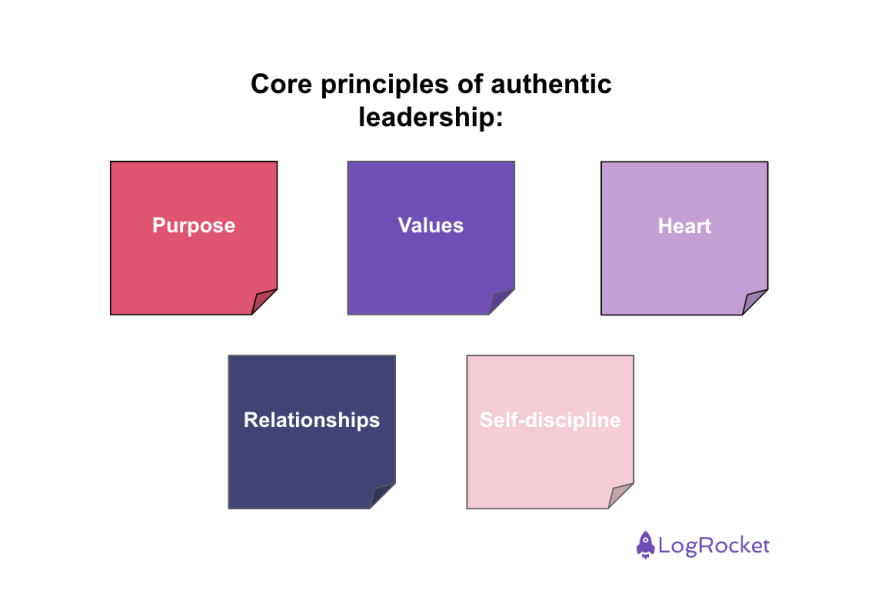In 2022, Gallup’s research on employment engagement showed that only a mere 23 percent of the world’s employees were actively engaged in their work. While it’s encouraging to see a positive trend in this number over the last decade, this figure remains disappointingly low.

Quality employee engagement comes from trust in leadership. This is important to remember because recent findings indicate that only 20 percent of US employees strongly agree that they trust their organizational leadership.
Recently, leadership has come to be associated with a lack of respect. This negative perception extends to individuals who naturally possess strong leadership qualities, but hesitate to take on leadership roles because they feel disconnected from the values and personality they believe a successful leader should embody.
You might ask yourself, “Why does this negative perception persist?” The phenomenon can largely be attributed to the lack of authenticity displayed by many leaders in their daily behavior and actions.
In this article, you will learn what authentic leadership is, how you can foster it within your project team, and read examples of successful leaders in practice.
Authentic leadership occurs when you’re genuine and act consistently with your principles and values. It is closely associated with principles of honesty and integrity.
Within the field of product management, authentic leadership is a relatively recent theory. It is closely associated with Bill George, an executive fellow at Harvard Business School. In 2003, George elaborated on this idea in his book “Authentic Leadership,” and then later in “True North.”
George believes that the negative emotions we experience today towards business leadership arise from our frequent preference for charismatic leaders over those with character-based leadership qualities.
We often favor individuals based on their image rather than those who consistently demonstrate integrity in their daily work. This tendency to prioritize style over substance leads to a command-and-control leadership approach. However, leadership based solely on image, without foundational integrity, is short-lived, and it won’t be long before we lose trust with the decisions made by such leadership.
There are several key aspects that make up the core of authentic leadership: purpose, values, heart, relationships, and self-discipline:

Authentic leaders are driven by a strong sense of purpose. This purpose is bigger than their personal interests and is rooted in the desire to make a meaningful impact on the lives of customers and contribute to a better world.
George’s leadership during his tenure at Medtronic illustrates what purpose truly means. The company developed a product that significantly improved people’s quality of life. While achieving remarkable growth, the true measure of success for George was the value delivered to the customer.
The company’s key metric was the time it took to restore a person using Medtronic’s product. With his team, George managed to reduce this number from 100 seconds to only 0.5 seconds.
When a purpose-driven metric becomes the core of a company, employees gain a profound understanding of the true purpose behind their work. They recognize that their diligent efforts are not aimed at impressing their managers, but at saving people’s lives. This sense of purpose instills in them a strong sense of responsibility to deliver their best work.
Authentic leaders have values. These values are not just mere words. They understand their values and never compromise on them. Every decision they make aligns with their values.
Mistakes are a natural part of any growth, but what sets an authentic leader apart is their unwavering integrity in decision-making and the transparency they exhibit. This transparency encourages others to follow, trust, and feel at ease with the decisions they make.
Targets and metrics matter significantly, but leaders should also show qualities beyond a strict focus on numerical outcomes. They ought to demonstrate empathy and genuine concern for their team members. This entails genuinely caring about the needs of others, recognizing the importance of their needs, and being willing to make personal sacrifices to enhance employee well-being.
Leaders should foster an environment where open and honest discussions are encouraged. Open communication helps with bottlenecks, enhances people’s well-being, and ultimately boosts productivity.
Authentic leaders care about their people beyond work. They take the long-term view. They maintain an open dialogue about career development with their team members while avoiding unrealistic promises.
When the time comes for an employee to transition to a new role or organization, authentic leaders continue to offer support to the individual. While work is important, the well-being of people matters even more. Leaders provide assistance when possible, prioritizing the well-being of individuals over the work itself.
Leaders often find themselves balancing a lot of responsibilities and competing priorities. Staying focused and effectively moving an idea into tangible outcomes can be quite challenging.
An essential trait of authentic leaders is their capability to sustain unwavering focus and persistent dedication to tasks until completion. It entails the ability to remain cool, calm, and focused, even in the face of stressful circumstances.
In a TED talk, Sean Georges tells an extraordinary personal story that serves as a powerful demonstration of what authentic leadership truly means in practice.
A young girl named Peyton was driving a car when she collided with a fully loaded coal truck, leaving her life hanging in the balance. First responders, comprising a diverse team of a police officer, volunteer firefighters, and an ambulance crew, rushed to the scene to save the life of this young girl. The outlook was pessimistic and saving the girl’s life appeared nearly impossible.
Confronted with this daunting rescue, the team explored every opportunity without wasting a single minute. They managed to find a small sunroof opening. With unwavering determination, one of them climbed through the sunroof and found a way to extract the girl from the car. The girl was rushed to the hospital, where she underwent multiple serious surgeries.
They achieved what seemed impossible. After two years, the girl not only survived but thrived. She rejoined her class, graduated from high school, and now attends college.
What the crew demonstrated was an exceptional example of authentic leadership.
They had a clearly defined, shared, and powerful purpose: save the girl’s life. They were guided by unwavering values, acting with integrity and compassion. It didn’t matter who performed which action; it was all about the mission. They worked with a wholehearted commitment, driven by a profound sense of empathy and selflessness. They displayed an incredible level of self-discipline and focus knowing that every second is precious.
This story serves as a reminder of what authentic leadership can achieve. It demonstrates how humanity can reach incredible heights when these principles guide our actions.
Is authentic leadership an inherent trait, or can it be learned?
I believe it necessitates a blend of both. Having a genuine personality, values that align with the core principles of authentic leadership, and alignment with the company’s values should be integral to a leader’s personality.
Once this foundational alignment is established, you can refine your leadership skills and continually improve. While some aspects may come naturally to some leaders, others may require deliberate attention.
Authentic leadership goes beyond appearance, image, or communication skills; it entails leading with genuine sincerity and a well-defined purpose.
In today’s business world, authentic leadership is more than a preference, it’s a necessity. New generations rightfully expect authentic leaders and it’s a path toward making the world a better place to live.
Featured image source: IconScout

LogRocket identifies friction points in the user experience so you can make informed decisions about product and design changes that must happen to hit your goals.
With LogRocket, you can understand the scope of the issues affecting your product and prioritize the changes that need to be made. LogRocket simplifies workflows by allowing Engineering, Product, UX, and Design teams to work from the same data as you, eliminating any confusion about what needs to be done.
Get your teams on the same page — try LogRocket today.

Most teams fail at autonomy. Learn how clear rules help product teams move faster without micromanagement.

A practical framework for PMs to use AI in ideation without sacrificing judgment, strategy, or decision quality.

A practical five minute revenue estimation method to help product managers compare ideas, drop low impact features, and prioritize smarter.

A practical guide for PMs who want to stop being bottlenecks, delegate smarter, and lead teams effectively with a clear ownership framework.